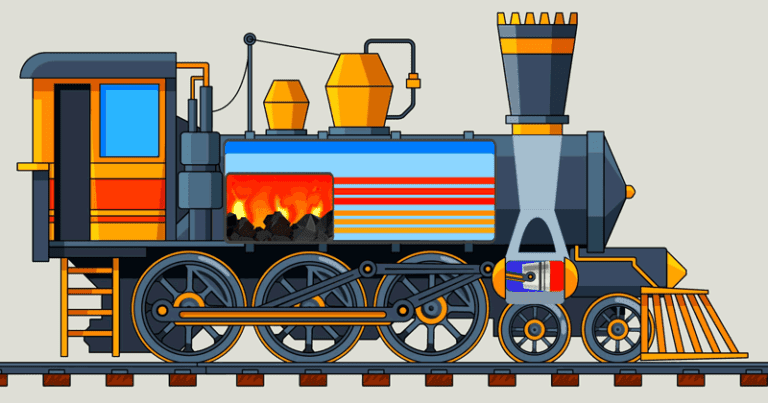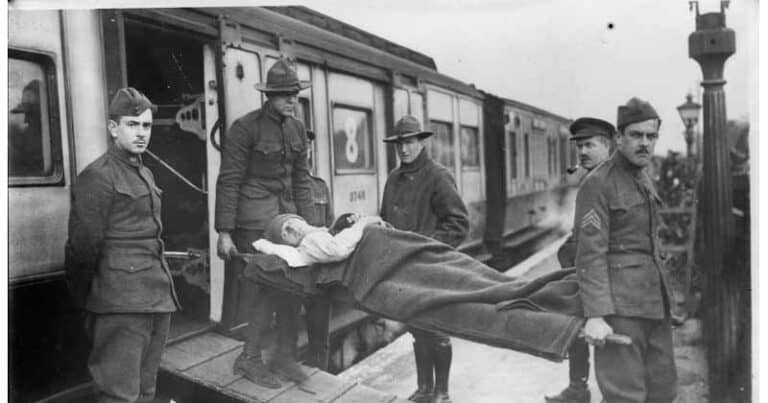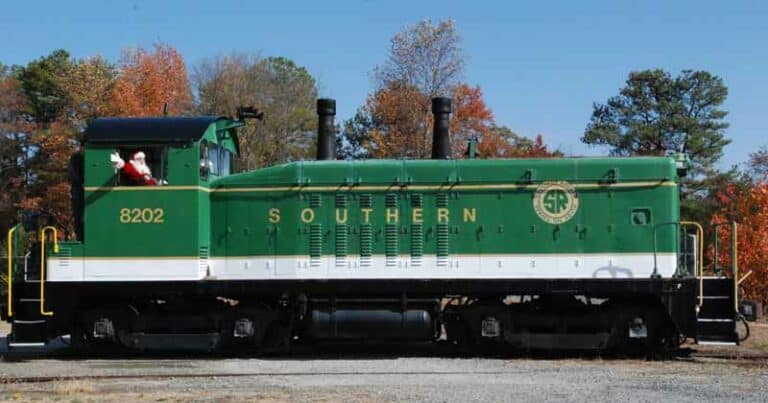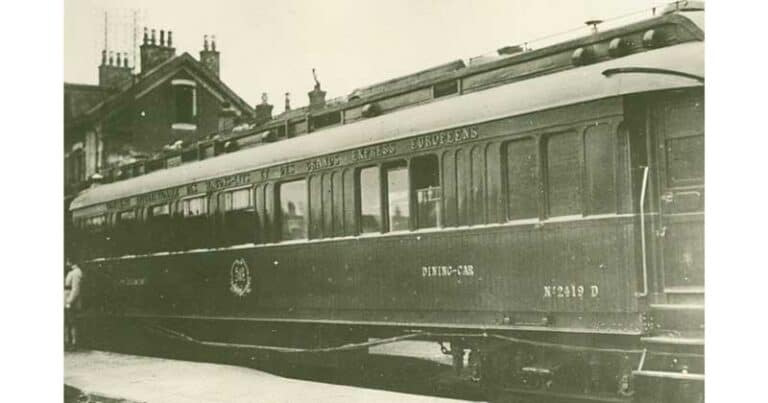The difference between an Articulated and non-Articulated Steam Locomotive
A newer railfan recently reached out to Steam Giants wanting to know more about the differences between articulated and non-articulated steam locomotives. The main difference between the two locomotive types is that articulated locomotives have one or more engines that have the ability to move independently from the main frame. Simply put, if a locomotive has multiple sets of driving wheels, it is articulated. But let’s dive deeper into the difference between the two.
Early in the 20th century, logging railroads were faced with the same challenges as many common carrier lines: how to move longer and heavier trains over greater distances coupled with mountainous regions. The initial response to this challenge in the rail industry was to build bigger models of the non-articulated steam locomotives that were so common to the railroad industry. However, the main drawback to these locomotives was the lack of speed and their inabilities to negotiate sharp curves that were a common feature in mountainous regions.

As the logging camps and loading areas moved farther away from the sawmills, the non-articulated steam locomotives’ lack of speed became a huge obstacle to efficient operations. This, together with many other challenges, led to the introduction of the articulated steam locomotives. But what did this new design mean for the railroad industry? Let’s find out!
WHAT IS A NON-ARTICULATED STEAM LOCOMOTIVE?
This article will perhaps make more sense by starting with a description of non-articulated steam locomotives. Well, non-articulated steam locomotives, also known as ‘straight locomotives’, were locomotives with all the driving wheels designed together and rigidly attached to the mainframes of the car bodies. While non-articulated steam locomotives were powerful engines, they had certain drawbacks that limited their efficiency.
Iowa Interstate #6988 is one of the newest steam locomotives in the USA and features a large 2-10-2 wheel alignment.
Although lack of speed has been mentioned widely as a drawback, the main challenge was the inability of straight locomotives to negotiate sharp curves. The wheel arrangements were rigid and this meant that only a fraction could negotiate curves. This challenge was magnified in mountainous regions where these powerful non-articulated locomotives had to climb the gradients while also negotiating sharp curves.

WHAT IS ARTICULATED STEAM LOCOMOTIVE?
An articulated steam locomotive is a steam locomotive that has one or more of its axles taking positions in which they don’t have to remain parallel to the others. This feature can enable the two sets of drivers to turn or swivel independently by assuming angular positions when going around curves. This was an essential feature that made it a lot easier for the drivers to negotiate curves.
History has it that it that the articulated design was invented in 1830 by a brilliant American engineer named Horatio Allen. However, its widespread adoption in the railway industry came largely in the 20th century at a time when most railroad companies were looking to widen their reach. In the United States, the the Baltimore & Ohio railroad was an early adopter, and they didn’t begin using the design until the early 20th century..

Given its advantage of easily negotiating even the sharpest of curves, the articulated steam design led to the development of various steam locomotives in the railroad industry. Railroad companies and manufacturers were no longer limited by the size of a locomotive’s wheelbase. Instead, locomotives with larger, longer, and more powerful wheel arrangements were built as long as they followed the articulated locomotive design.
Decades later in the 1920s and 1930s, more impressive articulated steam locomotive designs such as 4-8-8-4 Big Boy, the 4-6-6-4 Challenger, and the classic 2-8-8-4 Yellowstone among many others were being used. Today, the most notable articulated steam locomotive is the Union Pacific 4-8-8-4 No. 4014. It’s still in operation after it was restored in 2019.
Union Pacific Big Boys are some of the largest articulated steam locomotives ever built. Pentrex has a special dvd program highlighting the Big Boys.
MORE DIFFERENCES BETWEEN ARTICULATED AND NON-ARTICULATED STEAM LOCOMOTIVES?
While both articulated and non-articulated steam locomotives are majestic engines that’ll probably leave you in awe, their differences in terms of structure are quite clear. Here’s a look at the differences.
THE NUMBER OF AXLES PER VEHICLE
The first difference is the number of axles per vehicle. Articulated steam locomotives are designed with vehicles with one bogie or two axles, except for the cab vehicle, which is supported by three axles, and the bogies are located between vehicles. Differently, a non-articulated steam locomotive is supported by two bogies or four axles throughout with the bogies located directly below the underframe of the car bodies.

COUPLING DEVICES AND PATTERNS
The other difference between articulated and non-articulated steam locomotives revolve around the type and flexibility of coupling patterns. Articulated steam locomotives have two car bodies coupled together with one vehicle designed with a hinge carrier (female end) and the other designed with a hinge (male end). On the other hand, non-articulated steam locomotives are designed with identical intermediate vehicles that have both lateral and longitudinal directions.
It’s also important to note that the coupling of vehicles in articulated steam locomotives is very different from those of non-articulated steam locomotives. This, of course, revolves around how the vehicle is supported by the bogie. The idea here is that the locomotive restricts any form of lateral movement at the end of the curving between two vehicles. Instead, the rotational center or coupling position follows the path and direction of both the track centerline and the bogie. This means that the coupling device of an articulated steam locomotive has a hinge-type design, which makes it a lot easier to negotiate sharp curves.
On the other hand, the coupling area of a non-articulated steam locomotive at the bogie is located inside the car body end. This, in turn, will cause an overthrowing effect at the rotational center, which then affects its ability to make sharp corners at curves.
THE FREEDOM OF COUPLING DEVICES
Last but not least, the freedom of the coupling devices is quite different between an articulated steam locomotive and a non-articulated steam locomotive. As such, the relative lateral movements are strictly restricted in articulated steam locomotives and less restricted in non-articulated steam locomotives. This is a very unique advantage in articulated steam locomotives, especially in an event of a collision or when traversing zig-zagging terrains.
To this end, the differences between articulated and non-articulated locomotives are very clear. In addition to the difference in structural features and configuration, other main differences are in terms of the axle patterns, coupling patterns and stiffness, and freedom of coupling patterns.
The fact that articulated steam locomotives were invented to provide solutions to the shortcomings of non-articulated steam locomotives, especially in navigating curves that were commonplace in mountainous regions opened up new frontiers in the railroad industry and made the entire industry even better.

A longtime railfan, Bob enjoys the research that goes into his articles. He is knowledgeable on many railroad topics and enjoys learning about new topics. You can get a hold of Bob at his email link below.






